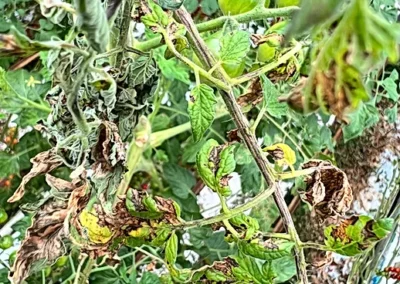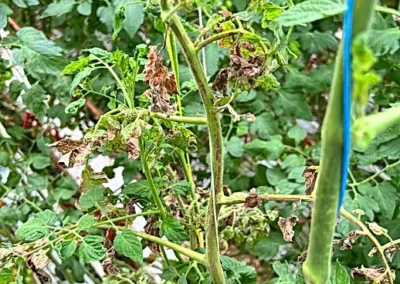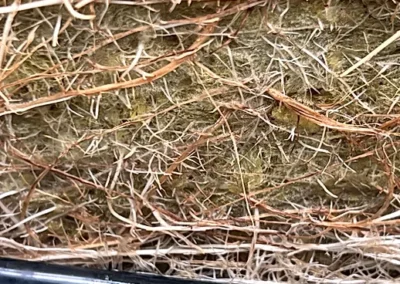Tomato brown rugose fruit virus (ToBRFV)
Initial symptoms of ToBRFV
As the top grows, the discolouration appears on a larger area of the leaf.
Initial symptoms of ToBRFV
Infected leaves visibly turn lemon, the veins usually remain green at this stage.
Infection of leaves (minor)
Yellow spots begin to appear on the leaves, and then begin to increase their surface.
Infection of leaves (moderate)
The leaf surface begins to turn yellow very quickly. Necrosis begins to appear fairly quickly on yellowing surfaces. The photosynthetic surface of the leaf is greatly reduced. The weight of the fruit also decreases.
Infection of leaves (severe)
Very large reduction in photosynthetic area, new leaves are very short. There is a lot of necrosis on the leaves and on the petiole. Secondary infections, e.g. with potato blight may appear.
Infection of the top shoot (minor)
The first symptom of ToBRFV on the plant. Chlorotic patches begin to appear on the top shoot. The disease begins to infect the next plants in the row. The virus is characterised by a high speed in which plants are infected.
Infection of the top shoot (moderate)
On average, after 2-4 weeks from the first symptoms, the tops are very generative, the leaf at the top shrinks, the photosynthetic surface of the plant decreases.
Infection of the top shoot (severe)
Plants begin to “lose” their tops, side shoots no longer sprout, plants wilt.
Fruit infection (minor)
Initially, the fruit turns red more slowly. The fruit often becomes softer at this stage.
Fruit infection (moderate)
The fruit is very corked, with many bumps. The peduncle begins to dry out.
Fruit infection (severe)
Discolouration of the fruit appears at this stage. The fruit is not spherical. Bumps begin to appear on the fruit.
Root infection (moderate)
An increasing number of transmission roots are infected with the disease. Due to limited water uptake, the plant begins to change its habit to a more generative one.


















